Articles
Do You Really Care?
As EHS professionals, we may scoff at first when a worker asks us, “Seriously, do you really care about what I’m doing?” But this question has a much deeper meaning than you may think.
In our day-to-day activities, much of the relationship building and many of the general discussions fall to skill-of-the-craft concepts. This means there is tremendous variability between individuals regarding how they approach and connect with people at a personal level. Many companies have abandoned engagement-based or team-based training due to budget restraints or a perceived lack of value, so there is…
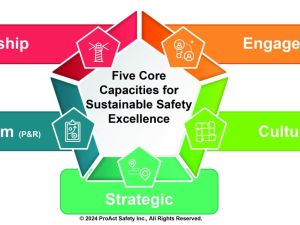
Five Core Capacities for Sustainable Safety Excellence
Does your organization have the capacity to achieve sustainable excellence in safety performance and culture?
For excellence to become a reality in any important area of operations, especially safety, there are five vital capacities that organizations must develop, monitor and synergize to adapt and thrive in a fast-paced and ever-changing world: system, leadership, engagement, cultural and strategic. Based on extensive cross-industry research and decades of experience leading change in all major industries, this article introduces the model titled “Five Core Capacities for Sustainable S…
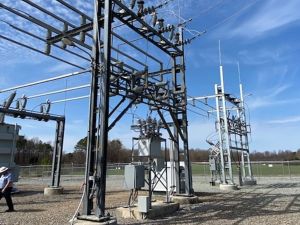
Solar Backfeed Safety on Distribution and Secondary Circuits
Editor’s Note: This timely article specifically addresses the contemporary issue of green-energy backfeed endangering power-line workers. Unlike engine-powered backup generators, green energy makes no telltale noise to alert workers to its presence and possible hazards. Incident Prevention encourages all employers to assess the risks related to backup energy sources and adopt effective storm-work hazard analysis, isolation and other protective procedures for worker safety.
It is night and you are working storm trouble on a single-phase line. The line fuse is blown, and you find wire down…

An Experiment in Crew Member Engagement
I don’t talk about myself a lot – I listen. I developed this skill after taking on a leadership position with a utility contractor in an industry I knew nothing about.
My work history prior to this role included management in pretty much every industry except utilities. In each of my previous jobs, I strived to learn and advance from an entry-level position. In this new position, I no longer had the advantage of knowing how the company ran from the ground up; I had to trust and depend on others to help me. It did not take me long to realize that safety is the most important priority in t…
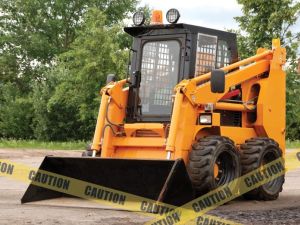
Skid-Steer Loaders: Hazard Awareness and Recommended Safety Practices
In 2009, OSHA published a safety and health information bulletin in part because of the seriousness of injuries that have occurred with skid-steer loaders (see www.osha.gov/sites/default/files/publications/shib011209.pdf). Similarly, NIOSH published an alert in December 2010 in response to the hazards and serious injuries that have occurred with these machines (see www.cdc.gov/niosh/docs/2011-128/default.html).
In their published documents, the two agencies aim to make employers and employees aware of the need to review and follow manufacturer instructions regarding proper use of skid-st…
Receiving Feedback
Most leadership development programs talk about the vital skill of giving feedback, as they should. I hope you’ve been trained on coaching and feedback and that you practice and enhance those skills frequently.
But what about receiving feedback? That is another skill that can be learned, practiced and improved. And it’s a skill I don’t think we provide enough training on. I’ll propose it is difficult if not impossible to give feedback if you aren’t good at receiving it. So, let’s talk about how to practice and enhance the skill of receiving feedback.
Sources of Feedback
Feedback is e…
April – May 2024 Q&A
Q: We recently participated in a safety seminar during which OSHA’s digger derrick/crane exemption was discussed. We have used the exemption with digger derricks to raise baskets of travelers to pole-tops for wire-pulling installation. Are we in compliance if we are not using a certified crane operator for this work?
A: Our interpretation of the OSHA rule indicates that your use of the digger derrick exemption is incorrect. Here’s a little history: OSHA’s Cranes and Derricks in Construction (29 CFR 1926.1400) final rule of 2010 included the exemption of digger derricks. In October 2012, …
Ruling Spans and Proper Conductor Sag
The cold winter weather of recent months has prompted many conversations about proper sagging and tension on transmission and distribution conductors. Improper sagging and excessively high tension on conductors – past their rated breaking strength – have caused unscheduled system outages, but such outages can be avoided by using the correct loading factors. The system will not fail when the correct tension and sagging factors are used, even in the coldest air.
Before we talk about calculating proper sag and tension, I want to share some relevant personal history. I remember the days when…
Switching and Tagging
Discipline is one of the many things that have served our industry well. Decades before OSHA was established by the Williams-Steiger Occupational Safety and Health Act of 1970, our industry already had disciplined procedures for switching, controlling and tagging circuits. When OSHA began to establish rules for the power-line industry, they recognized the superior discipline that utilities had employed in the control of hazardous energy and wrote into the standards those procedures that were being generally applied across the industry.
Readers can find OSHA’s hazardous energy control (i….
Fighting PPE Complacency
In the fast-paced world of utility work, it’s easy to fall into the trap of thinking, “This is just a quick job” or “I’ve done this a thousand times.” These thoughts can lead to complacency and poor decision-making around proper personal protective equipment use, including flame-resistant and arc-rated apparel. In this month’s Tailgate Topic, we’ll explore how to combat such complacency.
Many utility job tasks carry inherent risks, whether it’s working near live electrical equipment or navigating challenging terrain. Regular training sessions serve as invaluable opportunities to reinforc…

Getting to the Heart of At-Risk Behaviors with Facilitative Learning
In a recent workshop with a client in southeast Louisiana, a breakout session reached a tipping point. The rhythmic flow of dialogue among the seven supervisors in the group found an unscripted but purposeful path of its own. The task given to the group involved identifying at-risk behaviors or shortcuts likely to occur in their work environment. Participants were also asked to discuss motives for the identified behaviors and strategies for shifting perspectives regarding them. The intent of the three-part exercise, which was deliberately constructed to achieve the resulting outcome, was to…
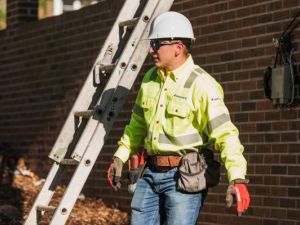
FR/AR Apparel Use: Are Your Workers Properly Trained?
Many workers in the utilities space bravely put their personal safety at risk every day on the job. Facing potential hazards such as arc flashes, flash fires and unpredictable elements of nature, these workers’ personal protective equipment – particularly their garments – is their last line of defense. However, proper apparel use can sometimes be overlooked or deprioritized, putting workers at greater risk of injury.
Whether you’re responsible for a few employees or 1,000, getting your team properly trained in the appropriate use of flame-resistant and arc-rated (FR/AR) apparel helps to …

ESG: Health and Safety Obstacle or Opportunity?
Over the past few years, much has been written and discussed about the role of environmental, social and governance, commonly referred to as ESG. Investors and customers are increasingly applying these nonfinancial factors as part of their analysis process to identify material risks and growth opportunities in the companies they decide to invest in. According to research from the Weinreb Group, in publicly held U.S. companies, the position described as chief sustainability officer has grown from 29 such officers in 2011 to 183 in 2023 (see https://weinrebgroup.com/2023-cso-report-press-rele…
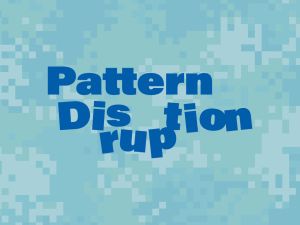
Pattern Disruption: Don’t Start with ‘Why’
In the northern latitudes, Mother Nature is deeply vested in a cycle of pattern disruption. The four seasons change the ecosystems and habitats. As the seasons shift in New York, the lake that I live on moves from a warm thermocline with colder layers on the bottom and warmer water on top to the opposite. In the coldest months, the top of the lake freezes entirely. The ground freezes, too, while the monarch butterflies leave and many of the birds fly south.
But even those pattern disruptions – the four seasons – become a rhythm, an expected ritual during which we trade lawnmowers for sno…
February – March 2024 Q&A
Q: We were driving ground rods with a hammer drill for a switch pad on a construction site when OSHA inspected the site. OSHA was there to see the general contractor, but they cited our crew for not using a ground fault circuit interrupter (GFCI) where we were plugged into the site’s construction temporary. That brought up these questions: Why GFCI? What does GFCI do and how does it work?
A: The GFCI or GFI (ground fault interrupter) was invented by University of California at Berkeley Professor Charles Dalziel. A GFCI does not limit voltage; you can still be shocked, but you won’t be ki…

